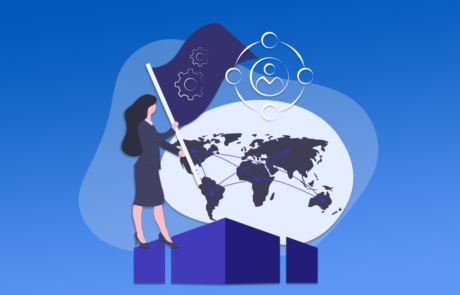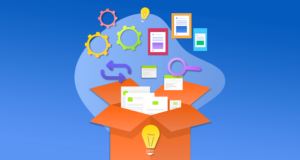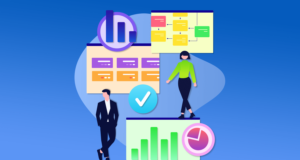Preparing for a Case Interview with Top 5 Consulting Frameworks
Blog Categories:
Published:
September 16, 2022
Reading Time:
6 minutes

Are you preparing for a case interview and are short on time? Worry not, use this article to quickly recall all the important frameworks that you already know about.
But before we dive into frameworks, let’s help you refresh your memory around case interviews. You see, case interviews can be divided into two types: Candidate-led case interviews and interviewer-led case interviews.
As the name suggests, in a candidate-led interview, you’ll be given a question and you’ll lead your answer. However, when the interviewer leads, they may ask specific questions as they wish.
But basically, these are the traits interviewers look for: Business acumen, creative thinking, analytical skills, and communication skills. Besides these, they will also examine how you structure your answer—this is key.
Alright. Now assuming that you’re super busy with your consulting interview preparation, let’s not waste time. Without further ado, let’s dive into the five important consulting frameworks.
As the name suggests, in a candidate-led interview, you’ll be given a question and you’ll lead your answer. However, when the interviewer leads, they may ask specific questions as they wish.
But basically, these are the traits interviewers look for: Business acumen, creative thinking, analytical skills, and communication skills. Besides these, they will also examine how you structure your answer—this is key.
Alright. Now assuming that you’re super busy with your consulting interview preparation, let’s not waste time. Without further ado, let’s dive into the five important consulting frameworks.
1. The Marketing Mix (4 Ps and 7 Ps)
Let’s quickly re-iterate the 4 Ps and 7 Ps first.
- Product: Product includes all the goods and services that companies sell to fulfill the needs or wants of customers. Whether it’s a chocolate or hairdressing service, it’s included in this section.
- Price: Even though ‘price’ sounds straightforward, setting the right price could be slightly more complicated than you think. During a case interview, you must set prices for your supposed client strategically.
- Promotion: Promotion refers to any communication that is created to attract customers and convince them to purchase a product.
- Place: Place refers to the channels and locations that a company uses to deliver its products to customers. Place can include retail stores as well as online stores.
KEY TAKEAWAYS
- Candidates may forget one or more of the 4Ps and 7 Ps of marketing. So, make sure you thoroughly remember all of them during the interview.
- Porter’s Five Forces can come in handy when your consulting case involves competitor analysis.
- McKinsey’s 7S model is a tool to examine an organization’s design and determine its efficiency. If you have an interview at McKinsey, you could use this framework to impress the interviewer.
- The Ansoff Matrix can be useful if your case interview is about business expansion. It can also help you demonstrate your ability to break complex ideas into smaller pieces.
- Profitability Framework, even though very basic, can also be extremely helpful.
2. Porter’s Five Forces Model
Again, while preparing for a case interview, you’ll likely come across Michael Porter’s work. He is an American academic who has written a lot of literature on economics and business strategies. His Five Forces model includes the following factors:

Okay, that was a very basic introduction to this consulting framework. If you’re still in the middle of consulting interview preparation, use this: Porter’s 5 Forces – The Explanation With Examples. This article gives you all the required details with examples—have a read if you have time.
- Competition in the industry: Simply put, the more competitors there are, the more difficult it’s going to be for everybody.
- Threat of new entrants: Is it easy to enter a given industry? Well, then new entrants can often become competitors.
- Power of suppliers: The more suppliers there are, the more authority they’ll have.
- Power of customers: A larger customer base equals more power to the company. On the flip side, a smaller group of customers could dictate a company’s decisions.
- Threat of substitute products: If a product is easily replaceable by a substitute product, well then—tough luck!

Okay, that was a very basic introduction to this consulting framework. If you’re still in the middle of consulting interview preparation, use this: Porter’s 5 Forces – The Explanation With Examples. This article gives you all the required details with examples—have a read if you have time.
3. McKinsey 7S Model
The 7S model is a tool to examine an organization’s design and determine its efficiency. This one can come in handy if you have an interview at McKinsey. Heck, even if you don’t really need to, just mention this framework somewhere. Maybe it’ll impress one of McKinsey’s hiring managers. Jokes aside, even if you’re appearing for an interview at any other firm, this framework can be helpful.
Here are the factors that are included in the 7S model:
- Strategy: The approach that a company uses to win a competitive edge and achieve its long-term goals.
- Structure: This refers to organizational structure. Without a chain of command, there’ll be chaos, especially in large organizations.
- Systems: These are the processes that are employed to ensure that daily operations go smoothly. Everything from production to distribution requires a proper procedure and workflow.
- Shared values: As the name suggests, these are the norms set by an organization that employees are expected to follow.
- Skills: Without skilled team members, a company may find it very difficult to grow and be profitable. An organization should either hire new skilled staff or upskill the existing ones.
- Style: No, this isn’t personal style and has nothing to do with what one wears. Style, in this case, refers to leadership and management style.
- Staff: This includes employees (of course) and also other factors like the size of the workforce, diversity, employee perks, etc.
4. The Ansoff Matrix
Also known as Market Expansion Grid, the Ansoff Matrix is a great tool businesses use to strategize expansion. While preparing for a case interview, you should go through as many matrix-style tools as possible. During the interview, you can use a matrix to break complex ideas into smaller pieces. It is a surefire way to wow the interviewer.
Anyway, let’s help you quickly recall the four quadrants of the Ansoff Matrix.
Simply put, the Profitability Framework is pretty basic: Revenue minus costs equals profit. Or Revenue - Costs = Profit (if you want to put it as an equation). Now although it seems very basic, it can be used to break down complex information and make it simple. Using this framework also gives you an opportunity to draw an issue tree. This is a great way for you to illustrate how you can diagrammatically explain solutions.
But, once again, this is a very basic framework! There are other complex frameworks you should also use. Potentially the ones that we discussed before in this article.
In conclusion, it’s not just about the consulting frameworks you choose. In reality, the interviewer wants you to solve problems. Regardless of how complex your framework is, if your solutions are generic, the interviewer won’t be impressed. It’s understandable that you have to remember a lot of topics during your consulting interview preparation. But have faith in your abilities. Ultimately, you have to demonstrate that you have the skills to work in a big consulting firm. Frameworks are just one way to do it.
Anyway, let’s help you quickly recall the four quadrants of the Ansoff Matrix.

- Market Penetration: Market penetration involves selling existing products into existing markets. New market research is not needed when the company sticks to an existing market.
- Market Development: This involves creating a growth strategy and selling existing products into new markets. It’s riskier than market penetration because new markets are involved.
- Product Development: This quadrant signifies the introduction of new products into existing markets. The risk here is that customers may not accept a new product when there are existing products already. But this new product may also be a game changer.
- Diversification: The riskiest venture of all four, this involves launching new products into new markets. A company should examine the risk-to-reward ratio before engaging in diversification.
5. Profitability Framework
As a consultant, you will come across the term MECE a lot. And you already know what it means: Mutually Exclusive, Collectively Exhaustive. So, what does it have to do with the Profitability Framework? Well, this framework is MECE and it can be beneficial for you if you demonstrate how well you understand it.Simply put, the Profitability Framework is pretty basic: Revenue minus costs equals profit. Or Revenue - Costs = Profit (if you want to put it as an equation). Now although it seems very basic, it can be used to break down complex information and make it simple. Using this framework also gives you an opportunity to draw an issue tree. This is a great way for you to illustrate how you can diagrammatically explain solutions.
But, once again, this is a very basic framework! There are other complex frameworks you should also use. Potentially the ones that we discussed before in this article.
In conclusion, it’s not just about the consulting frameworks you choose. In reality, the interviewer wants you to solve problems. Regardless of how complex your framework is, if your solutions are generic, the interviewer won’t be impressed. It’s understandable that you have to remember a lot of topics during your consulting interview preparation. But have faith in your abilities. Ultimately, you have to demonstrate that you have the skills to work in a big consulting firm. Frameworks are just one way to do it.
Share This Story, Choose Your Platform!



